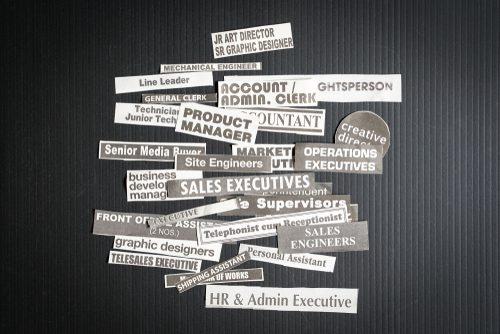
Company Culture
Did you know that burnout costs businesses an estimated $125 billion to $190 billion in healthcare spending each year? With work-related stress and exhaustion on the rise, it’s crucial for companies to prioritize employee well-being and combat the burnout epidemic. In this blog post, we will explore practical solutions and effective strategies to create a happier and healthier workplace, promoting productivity and employee satisfaction.
In today’s fast-paced and demanding work environments, burnout has become a prevalent issue affecting employees across industries. The negative impact of burnout not only affects individuals’ mental and physical health but also hampers productivity, engagement, and overall organizational success. As an HR and Payroll software company, we understand the importance of addressing this critical challenge and supporting companies in building resilient and thriving workforces. In this article, we will delve into the topic of burnout, its causes, and most importantly, practical solutions to alleviate and prevent burnout in your workplace.
In this comprehensive guide, we will explore the burnout epidemic and provide you with practical solutions to create a happier and healthier workplace. From identifying burnout symptoms to implementing strategies for prevention and intervention, we aim to equip you with the knowledge and tools necessary to combat burnout and promote employee well-being.
Understanding Burnout: Identifying the Symptoms
Burnout is not just a momentary feeling of exhaustion or stress; it is a state of chronic physical and emotional depletion resulting from prolonged work-related stress. By recognizing the signs of burnout, you can take proactive measures to address it effectively. Some common symptoms include persistent fatigue, decreased motivation, increased cynicism or negativity, reduced productivity, and physical symptoms like headaches or insomnia. By regularly assessing employee well-being and monitoring these signs, you can intervene early and prevent burnout from escalating.
Addressing the Root Causes: Promoting Work-Life Balance
To combat burnout, it is essential to address its root causes. One major contributor to burnout is the imbalance between work and personal life. Encourage your employees to establish healthy boundaries and prioritize self-care. Promote work-life balance by offering flexible work arrangements, implementing clear policies around overtime and workload management, and fostering a supportive company culture that values employee well-being.
Creating a Supportive Work Environment: Communication and Collaboration
Building a supportive work environment is crucial in preventing burnout and promoting overall employee engagement. Encourage open communication and create channels for employees to express their concerns and seek support. Implement regular check-ins, one-on-one meetings, and team-building activities to foster a sense of connection and camaraderie. By creating a culture of collaboration and support, you can help employees feel valued, heard, and motivated to perform their best.
Empowering Employees: Providing Opportunities
Empowering employees with the necessary resources, tools, and development opportunities can help prevent burnout. Provide access to training programs, workshops, and skill-building initiatives that enhance job satisfaction and foster professional growth. Additionally, consider implementing employee assistance programs, wellness initiatives, and stress-management workshops to support employees in managing their overall well-being.
Recognizing Accomplishments: Boosting Morale and Engagement
Recognizing and celebrating accomplishments is vital in promoting a positive work environment and preventing burnout. Implement regular employee recognition programs to acknowledge and reward hard work, milestones, and achievements. Celebrating successes not only boosts morale but also reinforces a culture of appreciation and inspires employees to continue striving for excellence.
Key Takeaways Summary
- Identifying the signs of burnout, such as persistent fatigue and decreased motivation, allows for early intervention and prevention.
- Encourage employees to establish healthy boundaries and prioritize self-care, offering flexible work arrangements and clear policies on workload management.
- Create open channels of communication, regular check-ins, and team-building activities to cultivate a culture of support and collaboration.
- Provide resources, training, and development opportunities to enhance job satisfaction and professional growth.
- Implement recognition programs to boost morale and reinforce a culture of appreciation, inspiring employees to excel and preventing burnout.
The burnout epidemic poses significant challenges for both employees and organizations. By proactively addressing burnout and implementing practical solutions, you can create a happier and healthier workplace that promotes employee well-being.

Company Culture
Did you know that organizations with a standardized onboarding process experience 54% greater new hire productivity and 50% higher retention rates? Onboarding is a critical step in the employee journey, and getting it right can make a significant impact on your business’s success. In this comprehensive guide, we’ll walk you through the essentials of onboarding and talent management, providing you with practical tips and strategies to ensure a seamless and effective onboarding experience for your new hires.
Welcoming new employees and integrating them into your organization smoothly is crucial for their engagement, productivity, and long-term success. Onboarding goes beyond just paperwork and orientation; it sets the stage for a positive employee experience right from the start. By implementing a well-structured onboarding process, you can build a strong foundation for a thriving workforce. This blog post will take you through the key components of onboarding, from pre-boarding to post-onboarding, and equip you with the knowledge to onboard like a pro.
In this comprehensive guide, we will delve into the world of onboarding, sharing industry best practices, practical tips, and real-life examples to help you create a memorable onboarding experience. From preparing before their first day to fostering long-term engagement, we’ll cover all the essential steps and strategies to optimize your onboarding process.
Pre-Boarding: Setting the Stage for Success
The pre-boarding stage is where you lay the foundation for a successful onboarding process. It’s essential to keep new hires informed and engaged before their first day. One effective strategy is to send them a welcome email that goes beyond the basic logistical information. In this email, provide a warm introduction to your company culture, values, and mission. Share stories or examples that illustrate what makes your organization unique and highlight any exciting initiatives or traditions that new hires can look forward to. This helps create a sense of anticipation and connection even before they officially start.
To ensure a smooth transition, it’s crucial to have their workspace ready and set up before they arrive. This includes preparing their computer, desk, and any necessary tools or equipment they’ll need to hit the ground running. This attention to detail shows your commitment to their success and makes them feel valued and supported from day one.
Another effective strategy is to introduce the new hire to the team before their arrival. Share their bio and photo with the existing team members, either through an email or on the company’s communication platform. This helps foster a sense of familiarity and encourages a warm welcome from colleagues. Consider going a step further and assign them a buddy or mentor who can guide them through their initial days. This designated support person can provide valuable insights, answer questions, and offer support as the new hire acclimates to their role and the company culture.
First Day: Making a Lasting Impression
The first day is a critical opportunity to make a lasting impression on new hires. It’s important to greet them with enthusiasm, warmth, and appreciation. A simple gesture like a friendly smile, a welcome gift, or a personalized note can go a long way in making them feel valued and excited about joining the organization.
Streamlining the paperwork process is another key aspect of a successful first day. Utilize digital onboarding tools to simplify and expedite the completion of necessary forms, policies, and procedures. This not only saves time but also ensures a smoother onboarding experience.
Take the time to walk new hires through your company’s policies, procedures, and benefits. Explain any important information, such as time off policies, insurance coverage, and performance expectations. This helps new employees feel confident and informed about what is expected of them.
Furthermore, use their first day to share your company’s mission, vision, and values. Emphasize the organization’s culture and the importance of teamwork and collaboration. Encourage interaction and engagement, allowing the new hire to ask questions, provide their perspective, and get to know their colleagues. This creates a sense of inclusion and sets the stage for building strong relationships within the team.
Training and Development: Equipping for Success
Comprehensive training and development play a crucial role in setting new hires up for success. Provide them with thorough training on their job responsibilities, systems, and tools. This training should cover both technical skills and company-specific knowledge. Offer hands-on learning opportunities, such as shadowing experienced team members or working on real-life projects. This practical experience allows new hires to apply what they’ve learned and gain confidence in their abilities.
Pairing new hires with mentors or experienced team members is another effective strategy. A mentor can provide guidance, answer questions, and offer support as the new hire navigates their role and the company culture. This mentorship relationship fosters a sense of belonging and accelerates the learning process.
Ongoing feedback and evaluation are crucial for continuous growth and improvement. Regularly check in with new hires to provide constructive feedback and praise for their accomplishments. This feedback loop helps them understand their strengths and areas for improvement, allowing them to excel in their role.
Post-Onboarding: Sustaining Engagement and Growth
Sustaining engagement and growth beyond the initial onboarding period is essential to retain top talent and foster a thriving work environment, especially in remote environments. Here are some key strategies for post-onboarding success:
Offer access to professional development resources, workshops, and online courses. Encourage employees to enhance their skills and knowledge by providing opportunities for continuous learning. This not only helps them grow professionally but also demonstrates your commitment to their long-term development.
Schedule follow-up meetings to assess the new hire’s progress and address any concerns or challenges they may be facing. These check-ins provide an opportunity to provide ongoing support, guidance, and feedback. It’s essential to show genuine interest in their experience and well-being, making them feel valued as integral members of the team.
In addition to regular check-ins, create a culture of open communication and encourage new hires to voice their opinions, ideas, and suggestions. This fosters a sense of ownership and involvement, allowing them to contribute meaningfully to the organization’s growth and success.
Acknowledging and celebrating achievements and milestones is crucial for maintaining morale and reinforcing a sense of belonging. Recognize their accomplishments publicly or privately, whether it’s completing a project, hitting a sales target, or reaching a specific milestone in their role. Small gestures like personalized notes or team celebrations can go a long way in boosting employee engagement and motivation.
Lastly, consider implementing employee engagement initiatives such as team-building activities, employee recognition programs, or wellness programs. These initiatives create a positive work environment, enhance team dynamics, and prioritize the well-being of your employees.
Key Takeaways Summary
-
Pre-boarding: Start the onboarding process before the new hire’s first day by communicating with them, preparing their workspace, and introducing them to the team. This helps create a positive and welcoming environment from the start.
-
First Day: Make a lasting impression by providing a warm welcome, streamlining paperwork with digital tools, and introducing the company’s culture and values. This sets the tone for the new hire’s experience and fosters a sense of belonging.
-
Training and Development: Equip new hires for success by providing role-specific training, mentorship, and coaching. Ongoing feedback and evaluation are crucial for their growth and development.
-
Post-Onboarding: Sustain engagement and growth by offering continuous learning opportunities, regular check-ins, and celebrating milestones. This keeps employees motivated and engaged in their roles.
Onboarding is an essential process for setting new hires up for success and creating a positive employee experience. By following the steps outlined in this comprehensive guide, you can onboard like a pro and build a strong foundation for your workforce. Remember, effective onboarding leads to higher productivity, increased retention rates, and a happier, more engaged workforce. So, invest the time and effort into creating a seamless and comprehensive onboarding experience—it will pay off in the long run. If you’re ready to take your onboarding process to the next level, reach out to our team to book a software demo and discover how our HRM software can streamline and enhance your onboarding journey.

Company Culture
Did you know that companies with highly engaged employees outperform their competitors by 147%? The remote work revolution has transformed the way we work, but it also presents unique challenges in keeping employees engaged and motivated. In this week’s HR and Payroll newsletter, we’ll unveil effective strategies for boosting employee engagement in a remote work environment. Discover how to harness the power of remote teams, increase productivity, and create a thriving virtual work culture that drives success.
As businesses adapt to the new normal of remote work, ensuring employee engagement has become a critical success factor. Engaged employees are not only more productive, but they also contribute to higher customer satisfaction and overall company growth. In this edition, we’ll share insights, practical tips, and strategies that will help you unlock the potential of your remote workforce and build a strong and engaged team.
We’ll explore effective strategies for boosting employee engagement in a remote work environment. From building a positive remote work culture to fostering work-life balance, leveraging technology, and measuring engagement, we’ll provide actionable advice to help you create an engaged and motivated remote workforce.
Building a Positive Remote Work Culture
To create a positive remote work culture, clear and effective communication channels are vital. Encourage regular team check-ins through video conferences or chat platforms to foster connection and alignment. Ensure that everyone is aware of project updates, goals, and expectations. In addition to work-related communication, encourage casual conversations to maintain a sense of camaraderie and build relationships within the team.
Recognizing and celebrating achievements is equally important in remote work environments. Acknowledge individual and team accomplishments publicly, such as through virtual shout-outs or dedicated channels. Consider hosting virtual team lunches or happy hours where employees can connect and share their successes. By celebrating milestones and accomplishments, you create a positive and supportive work environment that boosts employee morale and engagement.
Providing Opportunities for Growth and Development
Remote employees, like their office-based counterparts, are eager for growth and development opportunities. Offer virtual training programs and webinars that address their specific needs and professional goals. Provide challenging tasks and assignments that align with their skills and aspirations, allowing employees to stretch their abilities and gain new experiences. Regularly provide feedback on their performance and offer guidance for improvement and growth.
Consider implementing mentorship programs or pairing employees with experienced team members who can provide guidance and support remotely. By investing in your employees’ professional development, you demonstrate your commitment to their growth and create a culture of continuous learning. This not only enhances employee engagement but also helps retain top talent within your organization.
Fostering Work-Life Balance and Well-being
Maintaining a healthy work-life balance is crucial for remote employees. Encourage flexible work schedules that accommodate personal responsibilities and preferences. Set clear expectations regarding work hours and availability to avoid burnout and establish boundaries. Promote the importance of taking breaks throughout the day to recharge and prevent excessive screen time.
Support employee well-being by providing resources for mental health, such as access to virtual counseling or meditation apps. Organize wellness challenges that encourage physical activity and healthy habits. Consider implementing wellness initiatives, such as virtual fitness classes or health webinars, to promote a healthy lifestyle. By prioritizing work-life balance and well-being, you create an environment that values employees’ overall happiness and ensures they can perform at their best.
Enhancing Remote Team Building and Social Interaction
Building strong connections among remote team members is crucial for fostering engagement. Organize virtual team-building activities that encourage collaboration and teamwork, such as virtual scavenger hunts or team quizzes. Create dedicated chat channels or platforms where employees can engage in informal conversations, share ideas, or discuss non-work-related topics.
Consider implementing virtual coffee breaks or lunchtime chats where employees can socialize and get to know each other better. Encourage the use of video conferencing during meetings and brainstorming sessions to foster face-to-face interactions and build rapport. By nurturing a sense of community and social interaction, you create a supportive and connected remote team that is more engaged and motivated to collaborate effectively.
Leveraging Technology for Remote Engagement
Technology plays a crucial role in enabling remote employee engagement. Understanding how technology can benfit your business can be a daunting task, but once properly implemented it can revolutionize your workforce. Utilize collaboration tools and project management software to streamline communication, facilitate seamless workflow, and ensure transparency across teams. These tools provide a centralized platform for sharing files, assigning tasks, and tracking progress, enhancing efficiency and collaboration.
Implement virtual communication platforms effectively to ensure everyone stays connected. Encourage the use of video conferences for team meetings, one-on-one check-ins, and presentations to maintain a sense of connection and personal interaction. Explore innovative ways to connect and engage, such as virtual brainstorming sessions or online knowledge-sharing platforms, to encourage collaboration and the exchange of ideas.
Key Takeaways Summary
-
Clear communication channels, teamwork, and recognition are crucial for building a positive remote work culture.
-
Virtual training, challenging tasks, and regular feedback promote growth and development in a remote work environment.
-
Encouraging work-life balance, supporting well-being, and promoting breaks enhance employee engagement.
-
Virtual team-building activities and informal conversations foster remote team connections and social interaction.
-
Leveraging technology through collaboration tools and virtual communication platforms maximizes remote engagement.
Boosting employee engagement in a remote work environment requires intentional strategies and a people-centric approach. By implementing the strategies discussed in this newsletter, you’ll be on your way to creating a thriving virtual work culture that fuels productivity and success. Remember, engaged employees are more likely to go above and beyond, contribute innovative ideas, and stay committed to your organization’s goals.
In today’s fast-paced and ever-evolving business landscape, adapting to remote work is no longer an option but a necessity. By focusing on employee engagement, you can unlock the full potential of your remote workforce and create a competitive advantage.
Take your remote work engagement to the next level with our customized HRM software. Our powerful tools and features are designed to seamlessly manage your remote workforce, enhance communication, and boost employee engagement. From streamlined collaboration to automated workflows, our HRM software will help you navigate the challenges of remote work and create a productive and engaged virtual team.
Contact us today to schedule a demo and discover how our HRM software can transform your remote work environment. Together, let’s build a thriving and connected workforce that drives your business forward.

Communication Strategies, Company Culture, Employee Handbook
No. An employee wanting to change their hours because they got a second job is not something you’re required to accommodate. Even so, we wouldn’t recommend immediately giving the employee an ultimatum to keep working their current schedule or resign. Instead, we’d suggest talking with your employee about different options to see what you can make work. They may have some scheduling flexibility with their new job. One of their coworkers at your organization may be willing to change or swap their shift. There may also be additional shifts with your organization they could work instead of seeking additional income elsewhere.
If you exhaust these options and are still unable to accommodate the employee’s requested schedule change, you may just need to tell the employee no and let them decide what to do.
(more…)

Company Culture, Employment Classification
It depends. There are many reasons an employee may choose to use a job title on LinkedIn that is different than their official job title with your organization. For one, employees may feel that their job title doesn’t accurately or meaningfully describe the work they are doing. A job title that makes perfect sense internally may not be easily decipherable outside the organization. Numbered titles like Administrative Assistant 1 or 2 don’t, in themselves, tell you which one is higher. Trendy titles like Brand Evangelist may get overlooked in searches.
(more…)

Communication Strategies, Company Culture, Engaged Workforce
April is National Stress Awareness Month!
Consequences of too much stress within an organization may include increased turnover, spikes in health care costs, loss of valuable and productive employees, and loss of office collegiality. Employees caught managing organizational strife may individually struggle with physical or mental consequences.
“When we go to work we take along an invisible backpack containing the worries of our family life (perhaps the child who didn’t sleep, the spouse who is unhappy, or the recently diagnosed mother), and a load of our own anxieties and concerns. The backpack is heavy, made heavier so by the pressures of our jobs. When we experience unhealthy amounts of stress, we physically are not at our best.”
Katie Riker Sternberg, ICC, MSW, LMSW, MBA
Momentum Personal and Executive Coaching, LLC
Signs of Stress in the Workplace:
- Excessive workload (i.e., increase in overtime hours, work over the weekend)
- Mood swings (i.e., irritable, anxious, abnormally sensitive)
- Decrease in productivity
- Increase in absenteeism (i.e., increase in sick or personal days)
- Disengaged (i.e., less social and more secluded than normal)
- Fatigue (i.e., make more mistakes than usual)
- Job dissatisfaction
- Conflicts with bosses or coworkers
HR Strategies to Prevent Stress
1. Stress Management Coaching and Training
Adopt stress management education into your employee wellness program to educate employees on how to cope with day-to-day stressors. Executive coaching and team training are useful options, as they provide support, guidance, and resolution to stress-related problems. Have a therapist or health professional speak to your staff to provide knowledge on the effects of stress and tips to prevent them. Hold stress management workshops or schedule “Lunch and Learns” that cover topics on helping employees manage and reduce stress in their work and personal lives. Helping employees deal with stress improves engagement by contradicting things like the physical and mental damage stress can bring upon an individual.
2. Open Communication
Maintaining open communication and consultation are critical to leadership and preventing stress. Create an atmosphere where people feel it is okay to talk to management about problems they are facing. Talk with employees regularly to make sure everyone is clear about their job specifics and what is required of them. Provide clear business objectives, deadlines and expectations to make workdays more productive and less stressful. Carry out regular employee surveys to help you find any stress-related problems with individual managers or employees.
3. Flexible Schedules
The struggle to balance work and life is one of the main stressors employees face. Problems of commuting to and from work, finding time in the day to complete much-needed errands and still fit in quality time with family, personal obligations and many more challenge employees daily. Provide opportunities for employees who struggle with these daily challenges to contribute ideas on planning and organizing their own schedules. Having more control over their own schedule can boost employee morale and eliminate much of the daily workplace stressors. Encourage a healthy work-life balance by working with employees to offer flexible work arrangements, such as flexible hours, telecommuting or video conferencing, part-time work and job-sharing.
4. Value Employees
To maintain a happy, healthy and productive workplace, it is important to help employees cope with all stressors in their life, including the issues you cannot change. Try offering on-site services to employees at a discount. Services to implement might include car washes, oil changes, dry cleaning, mailing services, restaurant food delivery, eyeglass care, shoe shines, etc. Massage therapy is one of the best ways to help employees relax and relieve stress. Have a massage therapy service come to your office to offer neck and shoulder massages. Stress triggers all types of medical conditions. Provide free monthly health screenings for blood pressure or cholesterol. Programs like this can help employees identify stress-related health risks and provide knowledge of ways to improve their health. Partner up with a local gym to create weekly group exercise classes or discounts when purchasing memberships. Exercising and healthy eating can provide drastic changes in stress levels, resulting in increased productivity, energy, and inspiration to do better.
Help employees feel capable of dealing with all stressors in their lives by implementing some of the above HR strategies and maintain a happy, healthy and productive working environment.
Stay tuned for next week’s blog to hear more on stress management in the workplace through the eyes of Katie Sternberg, ICC, MSW, LMSW, MBA of Momentum Personal and Executive Coaching, LLC!







